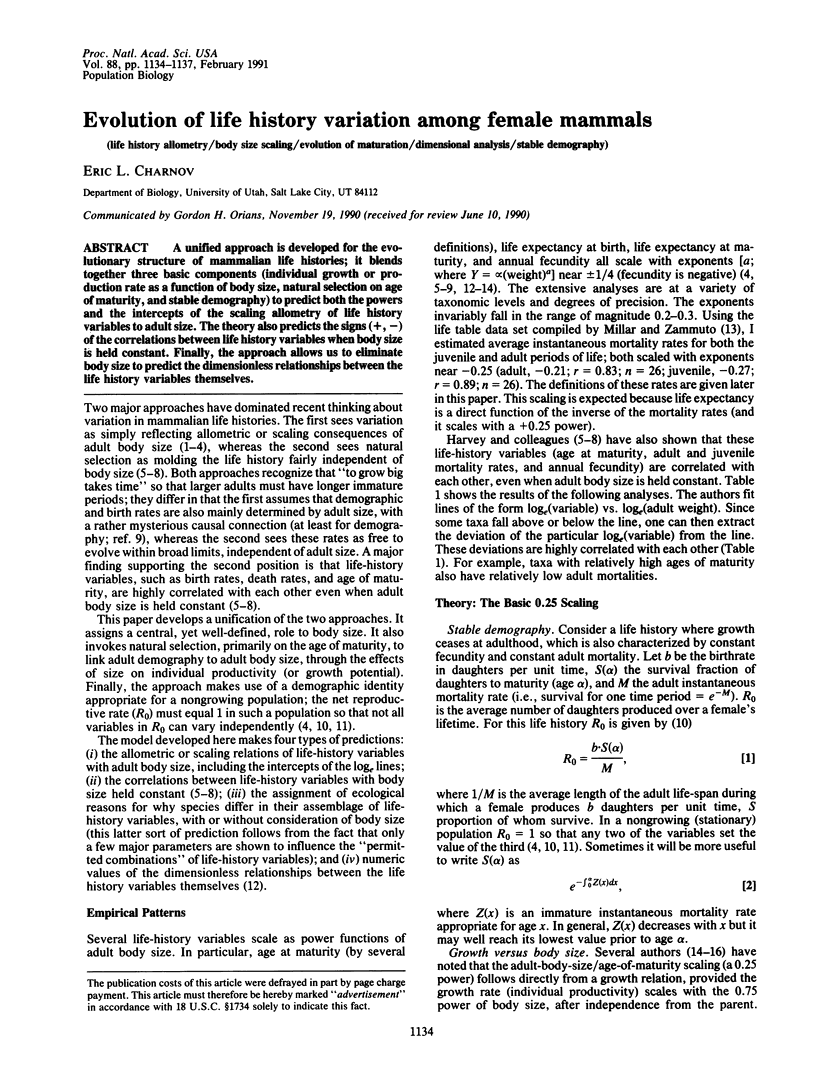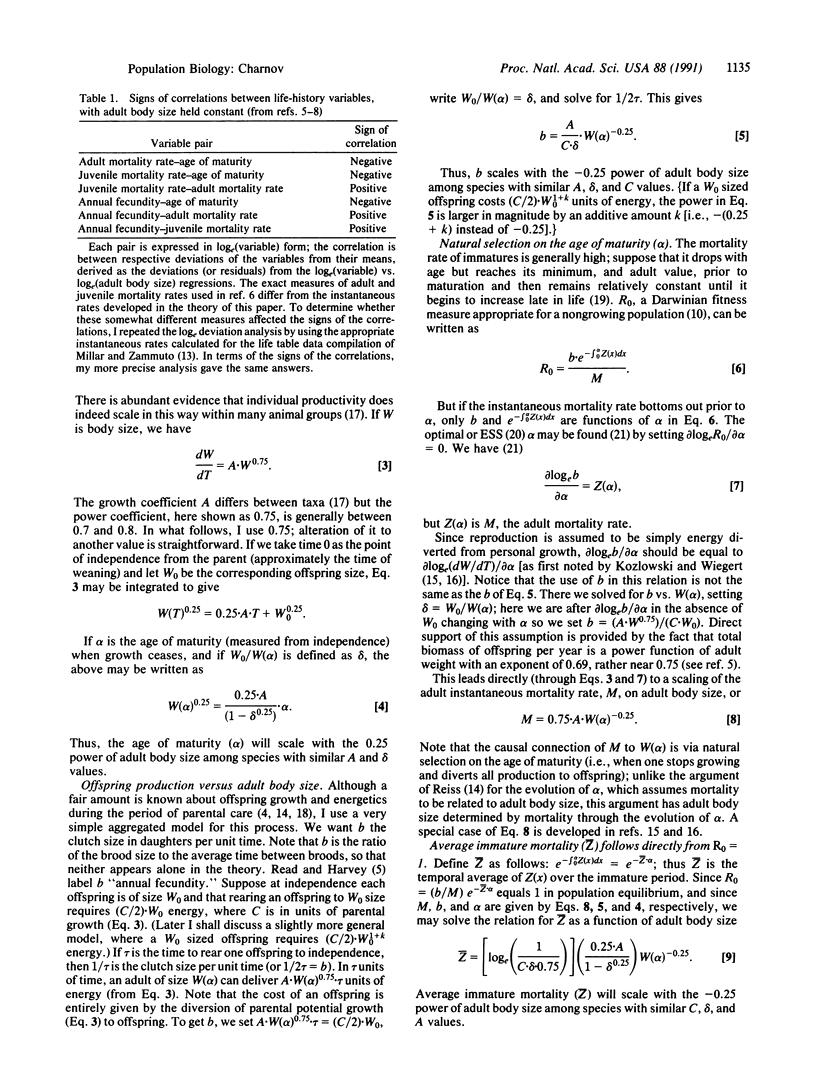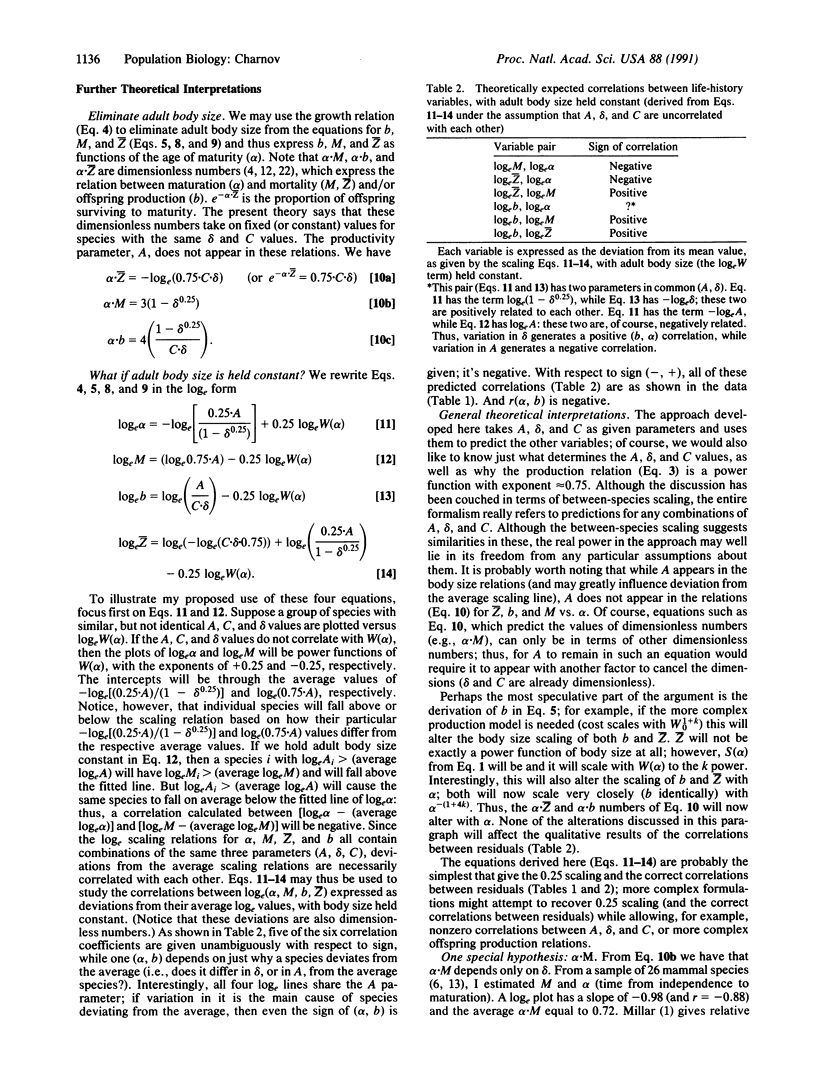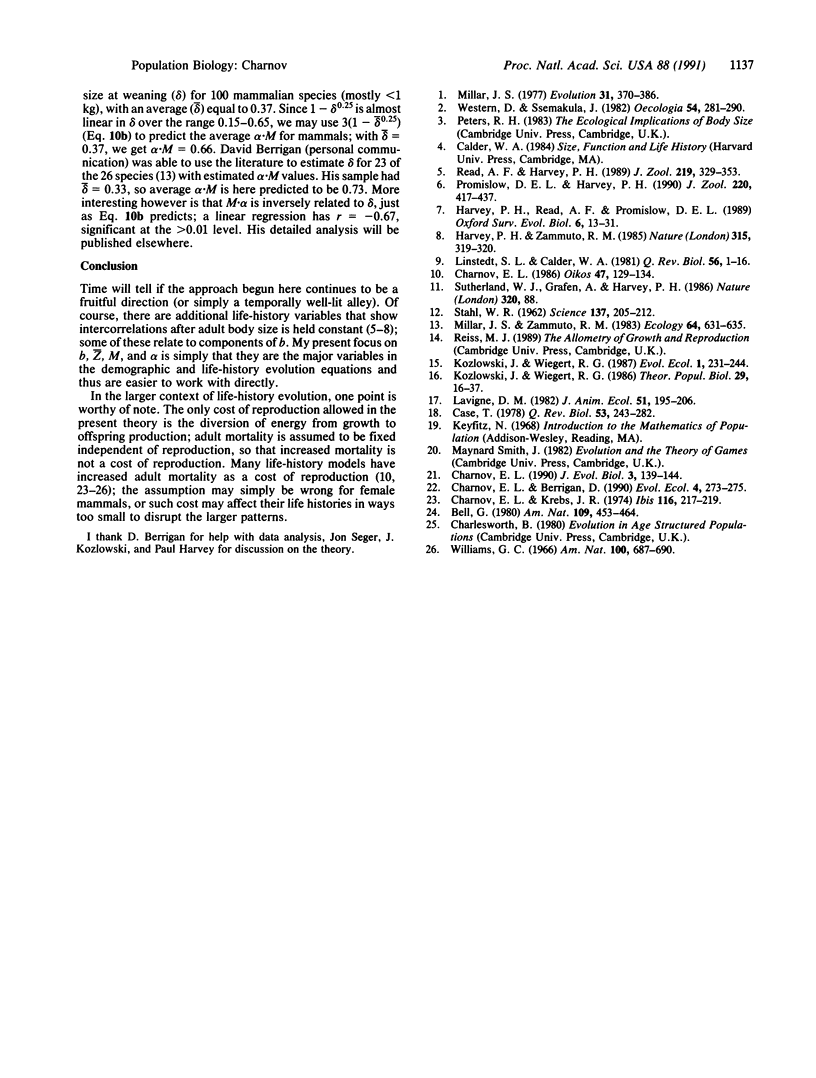Abstract
A unified approach is developed for the evolutionary structure of mammalian life histories; it blends together three basic components (individual growth or production rate as a function of body size, natural selection on age of maturity, and stable demography) to predict both the powers and the intercepts of the scaling allometry of life history variables to adult size. The theory also predicts the signs (+, -) of the correlations between life history variables when body size is held constant. Finally, the approach allows us to eliminate body size to predict the dimensionless relationships between the life history variables themselves.
Full text
PDF



Selected References
These references are in PubMed. This may not be the complete list of references from this article.
- Case T. J. On the evolution and adaptive significance of postnatal growth rates in the terrestrial vertebrates. Q Rev Biol. 1978 Sep;53(3):243–282. doi: 10.1086/410622. [DOI] [PubMed] [Google Scholar]
- Harvey P. H., Zammuto R. M. Patterns of mortality and age at first reproduction in natural populations of mammals. Nature. 1985 May 23;315(6017):319–320. doi: 10.1038/315319a0. [DOI] [PubMed] [Google Scholar]
- Kozłowski J., Wiegert R. G. Optimal allocation of energy to growth and reproduction. Theor Popul Biol. 1986 Feb;29(1):16–37. doi: 10.1016/0040-5809(86)90003-1. [DOI] [PubMed] [Google Scholar]
- STAHL W. R. Similarity and dimensional methods in biology. Science. 1962 Jul 20;137(3525):205–212. doi: 10.1126/science.137.3525.205. [DOI] [PubMed] [Google Scholar]


